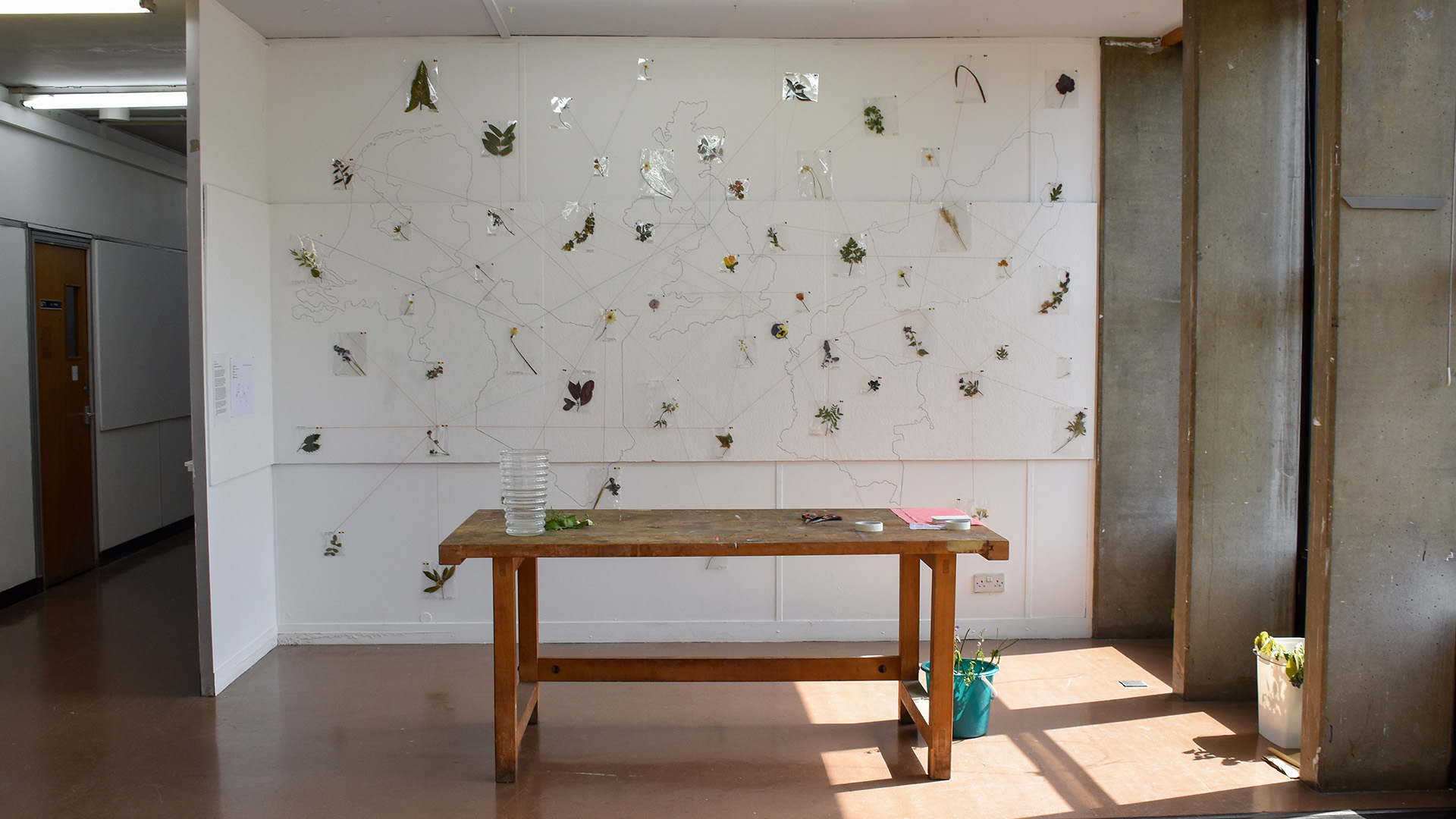Rosie Kang,
Class of 2022
Artisit, Designer, Curator
The Entanglements: A Cartography of Flower Origins
Class of 2022
Artisit, Designer, Curator
The Entanglements: A Cartography of Flower Origins
Historically, flowers have been the subject of numerous paintings. However, here, I focus on the entanglements of flowers. I consider their beauty and the cultural traditions surrounding their display, alongside their place in the global economy. I trace the journey that cut flowers make from source to shop stands as a counterpoint to the seemingly benign practice of artful arrangement.

In the installation, flowers of various origins are dried, pressed and preserved in transparent containers before being classified according to the journeys they took. Apart from the UK in the middle, the pencil drawn map on the wall depicts the four countries that produce the most cut flowers worldwide – Netherland, Kenya, Colombia and South Africa. By reading the cartography, social, political, cultural, and geographical origins of cut flowers and plants are revealed.
Coloured threads divide the flowers into five, often overlapping, categories: mass produced, locally and seasonally produced, wild, those that depend on women’s labour, those that leave a high carbon footprint. The intertwining threads construct a massive entanglement, creating tensions between the ‘politics of things’ (Bruno Latour, 1991). For example, Kenya relies on the flower industry for 1% of its GDP (BBC, 2019) and women support the entire family through their labour in flower farms. However, to reach their destinations these mass-produced flowers leave a high carbon footprint. Our choice of flower may benefit a family on the other side of the globe but also add to global warming. Every choice is contingent.
During the workshop, visitors will be invited to complete an arrangement with their choice of flowers while acknowledging the contradictions between different values. Arrangements made by visitors will be photographed displayed immediately on the exhibition wall increasing as the exhibition progresses and becoming a significant part of the whole installation.
I hope to disclose the invisible networks between the social, cultural and political life of flowers through this installation. Ultimately, my practice-based research will develop by building a reciprocal relationship between the study of flowers and visitors’ values.
Coloured threads divide the flowers into five, often overlapping, categories: mass produced, locally and seasonally produced, wild, those that depend on women’s labour, those that leave a high carbon footprint. The intertwining threads construct a massive entanglement, creating tensions between the ‘politics of things’ (Bruno Latour, 1991). For example, Kenya relies on the flower industry for 1% of its GDP (BBC, 2019) and women support the entire family through their labour in flower farms. However, to reach their destinations these mass-produced flowers leave a high carbon footprint. Our choice of flower may benefit a family on the other side of the globe but also add to global warming. Every choice is contingent.
During the workshop, visitors will be invited to complete an arrangement with their choice of flowers while acknowledging the contradictions between different values. Arrangements made by visitors will be photographed displayed immediately on the exhibition wall increasing as the exhibition progresses and becoming a significant part of the whole installation.
I hope to disclose the invisible networks between the social, cultural and political life of flowers through this installation. Ultimately, my practice-based research will develop by building a reciprocal relationship between the study of flowers and visitors’ values.